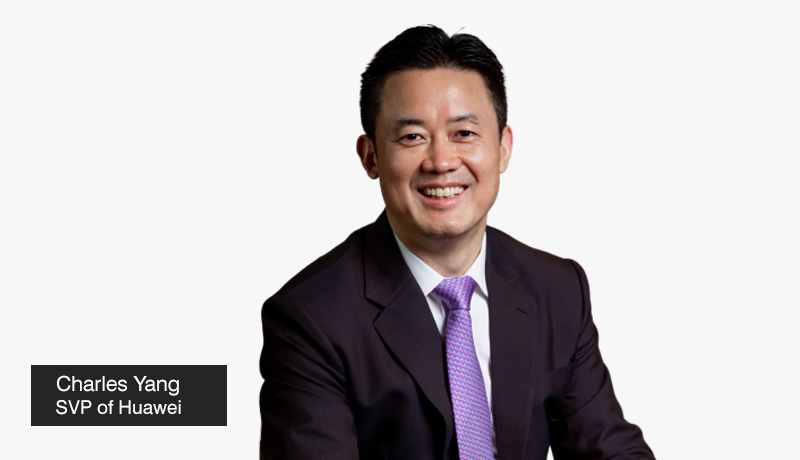
As Middle Eastern businesses embrace digital transformation, Charles Yang, SVP of Huawei and President of Global Marketing, Sales, and Services at Huawei Digital Power sees the Middle East, particularly the Gulf, as a region of “strategic importance” to the company.
The executive outlined the company’s vision in a press conference on the sidelines of this week’s GITEX Global 2021 summit held in Dubai, UAE. The executive notes that, globally, almost 40% of carbon emissions now come from electric systems. “Many countries have proposed their timeline to achieve carbon neutrality, but to be able to deliver that goal, we need to build electric systems based on new kinds of power sources,” says Yang.
It is one of several priorities that Huawei Digital Power has in the Gulf region over the coming years. Founded earlier in 2021, Huawei Digital Power now looks at five areas of business globally: Smart PV, data center facilities, mPower for electric vehicles, site power, and integrated energy solutions. “While we will have cooperation with business in all of these five domains in the GCC, I believe that Smart PV and data center facilities are particularly important,” comments Yang.
With some of the world’s longest daylight hours—estimated at 2,5000 hours per year—Yang believes the region offers significant potential for large-scale PV and energy storage systems deployment. To that goal, Huawei Digital Power has already formed strategic alliances with a number of enterprises to help them deploy such systems in the region and globally.
“In the past, oil was the pillar of economic growth. But in the future, data will become a new engine for economic expansion,” contends Yang.
In terms of data centre facilities, Yang points out that cloud and digital sovereignty improvements have accelerated the construction of data centre facilities in many countries. With the development of 5G networks and services, data traffic is likely to increase, and additional data centres are expected to be built
“At Huawei Digital Power, we can combine digital and power electronics technology to provide low carbon solutions to end users that are secure, simplified, and green. Using AI, cloud, and big data will facilitate more efficient operation and maintenance so that enterprises can provide clean and stable power to society. Suppose we put 5G and digital power together, as one example. In that case, we can envision a future where we can build smart and integrated energy solutions easier and at lower costs,” adds Yang.” After the pandemic, there will be even greater demand from society for new and green power sources.”
The executive cites how Huawei holds over 70% of the data center facility market share in the Middle East. While traditionally data center construction would take on average 24 months, now this can be done in just six to nine months. “Another important factor for data center facility is energy consumption. Through a combination of AI and power electronics technologies, for example, Huawei solutions can reduce the PUE of data center facility from 1.45 to 1.2, which is very competitive in the industry.”
Regarding global sustainable development goals, Yang believes that more countries will join treaties in the future. “This is not only our responsibility and obligation for future generations, but they also present new economic development opportunities.” He cites,for example, how technologies have helped enable the cost of solar power generation to be 5 to 10 times less than the same amount of power generated with fossil fuels.
Yang added: “In the Middle East region, we’ve worked extensively with governments, enterprises, and partners in solid relationships, providing the latest equipment, technologies, and solutions to support their digital transformation. Moreover, there are lots of resources in the Middle East region for renewable energy. In the digital power domain, our goal is to build a digital power cloud that covers the end-to-end process of the power industry, from generation to transmission, distribution, and consumption, using big data technologies to help our customers and partners to improve energy efficiency, and ultimately build a low-carbon society. We also strive to build low-carbon campuses ourselves. For example, in our Huawei campuses in Hangzhou, Nanjing, Suzhou, and in our manufacturing site in Dongguan, we have PV panels on top of the roofs, generating 19 MWh of electricity every year, with an installed capacity of 20 MW. That is equivalent to 9,000 tons of carbon emissions saved.”
Huawei wants to merge digital and power electronics technologies to give end consumers secure, simple, and green low-carbon solutions. Over the years, Huawei has assisted clients in generating 400 TWh of green energy and saving 14.2 TWh of electricity, resulting in a reduction of 200 million tonnes of carbon dioxide emissions, equivalent to planting 270 million trees.